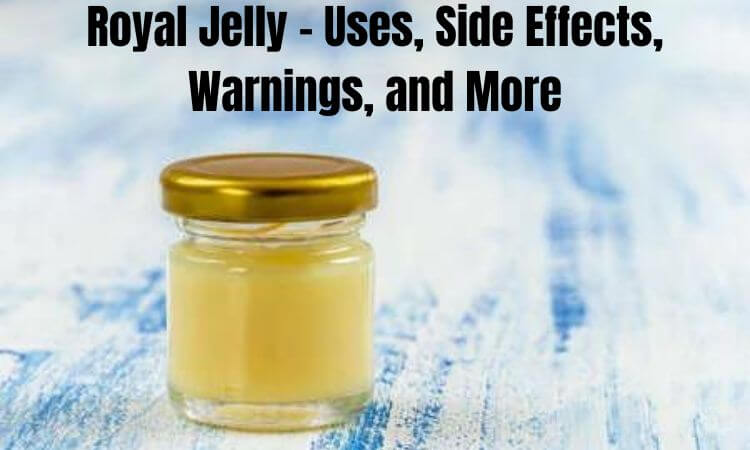Table of Contents
Royal Jelly – Uses, Side Effects, Warnings, and More
royal jelly benefits,royal jelly capsules,royal jelly for men,royal jelly price,royal jelly bees,royal jelly honey,royal jelly benefits,royal jelly capsules,royal jelly for men,royal jelly price,royal jelly benefits for female,royal jelly bees,how to take royal jelly,royal jelly side effects
Overview
The worker honeybees of a hive produce a milky substance known as royal jelly (Apis mellifera). It has a high concentration of carbohydrates, protein, amino acids, fatty acids, vitamins, and minerals.
The fact that royal jelly is fed to the queen bee is how this type of jelly got its name. Its make-up shifts according to the local geography and weather conditions.
Royal jelly is used by some as a treatment for symptoms associated with menopause. Additionally, it is used for the treatment of hay fever, diabetes, premenstrual syndrome (PMS), obesity, dry eye, and a lot of other conditions; nonetheless, there is insufficient credible scientific data to back up these applications.
Royal jelly should not be confused with other bee products such as bee pollen, beeswax, bee venom, honey, or propolis. Additionally, it should not be confused with apitherapy. These are two entirely different things.
What Are the Benefits and Applications?
Possible Benefits for Menopausal Symptoms and Other Issues It appears that ingesting royal jelly, either on its alone or in combination with other components, can help alleviate some of the symptoms associated with menopause. However, it is unclear whether rubbing royal jelly into the skin is beneficial.
It’s possible that this won’t help with hay fever. There is no indication that ingesting royal jelly both before and during the peak pollen season may alleviate symptoms of seasonal allergies.
Diabetes. Diabetes patients who take royal jelly internally do not appear to experience an improvement in their blood sugar levels.
DO NOT MISS: Fish Oil – Uses, Side Effects, Warnings, And More
performance in physical activities by older persons. It does not appear that taking royal jelly by mouth will increase the hand grip strength, walking ability, or balance of old persons who are residing in nursing homes.
There is considerable interest in applying royal jelly to a variety of other applications; however, there is insufficient trustworthy data to determine whether or not this could be beneficial.
Adverse Reactions
When consumed via the oral route: If consumed for a very short period of time, royal jelly may not pose any health risks. It has been demonstrated that it is safe to utilise daily doses of up to 4.8 grammes for up to a year. In most cases, it is well tolerated. On the other hand, those who suffer from asthma or allergies could have an allergic reaction.
When used on the skin, there is a possibility that royal jelly is safe to use for up to six months at a time. It has the potential to irritate the skin and produce rashes in certain individuals.
Important Safety Instructions and Cautionary Notes
When consumed via the oral route: If consumed for a very short period of time, royal jelly may not pose any health risks. It has been demonstrated that it is safe to utilise daily doses of up to 4.8 grammes for up to a year. In most cases, it is well tolerated. On the other hand, those who suffer from asthma or allergies could have an allergic reaction.
When used on the skin, there is a possibility that royal jelly is safe to use for up to six months at a time. It has the potential to irritate the skin and produce rashes in certain individuals.
There is not enough trustworthy information available to determine whether or not it is safe to consume royal jelly when pregnant or nursing a child. Pregnancy and breastfeeding: To be on the safe side, you should avoid using it.
When administered orally to children aged 5 to 16 years old for a period of up to six months, there is a possibility that royal jelly will not have any adverse effects.
If you suffer from asthma or are allergic to bee products, you should not consume royal jelly because it contains bee venom. It is possible that this could result in life-threatening reactions or even death.
What are the interactions?
Interaction that is Not Overbearing
Take precautions when using these two together.
The blood thinner Warfarin (also known as Coumadin) reacts with ROYAL JELLY.
It’s possible that eating royal jelly will make the effects of warfarin worse. Taking warfarin while also consuming royal jelly may increase the likelihood of bruising and bleeding.
Royal Jelly and certain medications for high blood pressure, known as antihypertensive medicines, are known to interact with one another.
There is some evidence that royal jelly can reduce blood pressure. If you take medications that decrease your blood pressure and royal jelly at the same time, your blood pressure could drop to an unsafe level. Always keep a tight eye on your blood pressure.
Dosing
Adults have been known to take oral quantities of up to 1000 milligrammes (mg) of royal jelly per day for a period of up to six months. Additionally, it has been used topically in a variety of products, such as fresh royal jelly, vaginal creams, vaginal solutions, and ointments, to name a few of the more common ones. Talk to a medical professional about your symptoms to find out what kind of treatment and dosage would work best for your particular problem.



